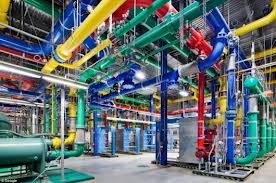Datacenter Spending Up, Energy Efforts Hitting Wall

A survey of the datacenter industry broken down into colocation and financial services along with a catch-all enterprise category found that the former are receiving budget increases while enterprise spending on datacenters is slowing.
The 2014 datacenter survey by market researcher and industry consultant Uptime Institute also warned that investments aimed at improving datacenter power usage efficiency, or PUE, are hitting a wall.
While the survey was weighted heavily toward North American datacenters, it does include responses from facilities and IT managers along with their bosses in key geographic markets. About 52 percent of respondents were enterprises, the researcher said.
The survey found that 62 percent of respondents reported increased spending on datacenters while only 13 percent said budgets were being cut. Most providers of colocation services (86 percent) reported year-on-year budget increases, including 46 percent who said they received large budget increases.
Datacenter spending for financial services also increased, with 63 percent of respondents in this vertical reporting a budget increase. However, 21 percent reported that their budget was cut from the previous year.
Enterprise spending for datacenter expansion was split down the middle, with 50 percent receiving budget increases and the rest reporting stagnant or reduced spending.
Surprisingly, the largest percentage increases in datacenter spending were in traditional developing regions like the Middle East and Africa. Smaller percentage increases in the U.S., Canada and Europe may reflect greater datacenter investments in previous years.
Of facilities managers surveyed, 65 percent said they received a budget increase in the last year. However, the survey found that the majority (57 percent) of IT management budgets were either stagnant or declining.
That finding reflects an overall industry trend in which corporate IT budgets are under pressure as managers struggle to find cost savings so they can modernize datacenters and other enterprise infrastructure.
On the energy front, fully 70 percent of managers surveyed said they receive updates on datacenter energy costs. However, only 46 percent of managers said they establish targets for datacenter energy costs.
Similarly, 72 percent of company executive and IT managers surveyed said they measure PUE. Nearly all colocation service providers (95 percent) said they track energy usage.
Datacenter PUE ratings tend to run between 1.2 to 3.0. The lower the value, the higher the PUE rating and the higher the efficiency of the facility.
Uptime found that nearly half of the datacenter industry was targeting a PUE rating between 1.2 and 1.5. Many are incorporating energy-saving features like hot or cold aisle containment (80 percent) and increased server inlet air temperatures (63 percent).
The rub is that these energy-saving efforts appear to be yielding diminishing returns on the investment, according to Matt Stansberry, who oversaw the Uptime datacenter study. The survey found that average industry PUE ratings that had been moving steadily downward since 2011 bumped up to an average rating of 1.7 in the 2014 survey.
"This is called diminishing returns," Stansberry warned.
The datacenter survey also forecast that adoption of "off-premise computing" would continue slow but steady over the next year. During that period, company-owned datacenters are expected to decline 3 percent to 65 percent of those surveyed.
Meanwhile, the adoption of colocation services is expected to rise a single percentage point during the same period to 26 percent, the survey found.
Related
George Leopold has written about science and technology for more than 30 years, focusing on electronics and aerospace technology. He previously served as executive editor of Electronic Engineering Times. Leopold is the author of "Calculated Risk: The Supersonic Life and Times of Gus Grissom" (Purdue University Press, 2016).













